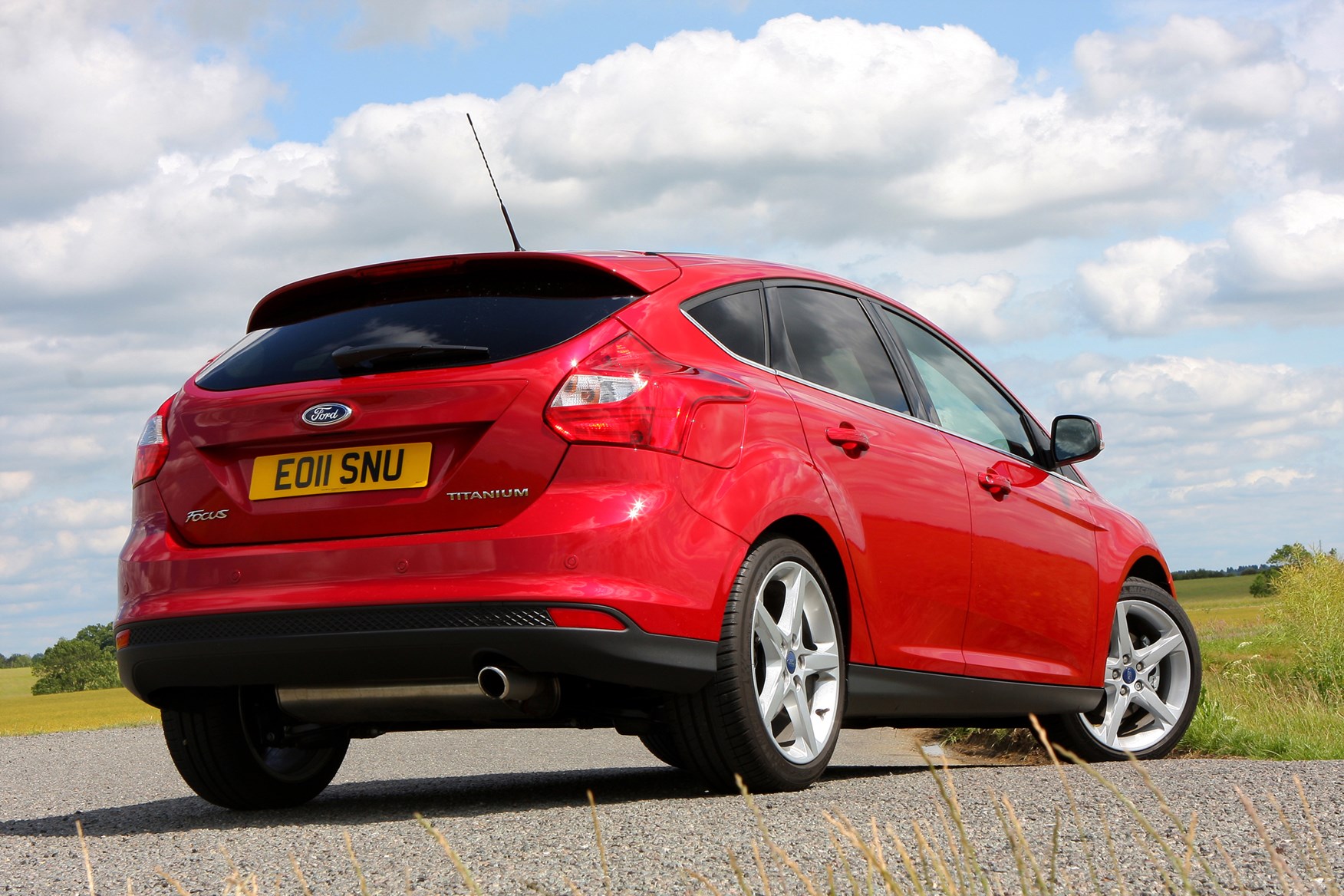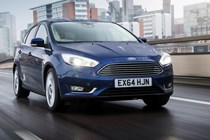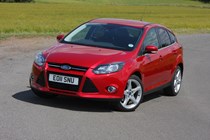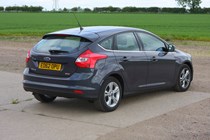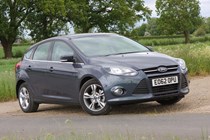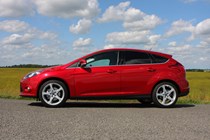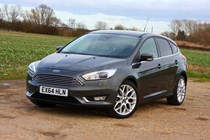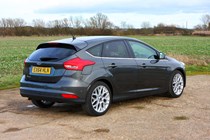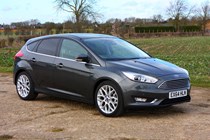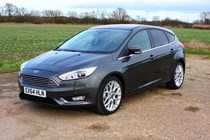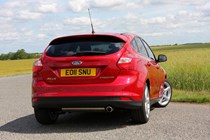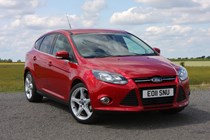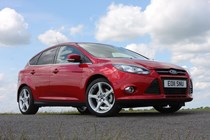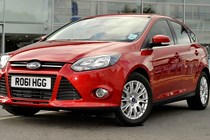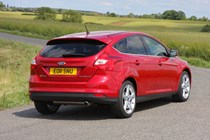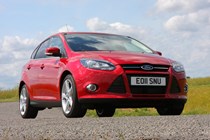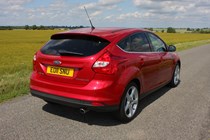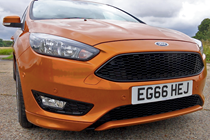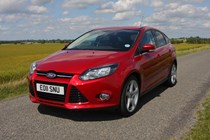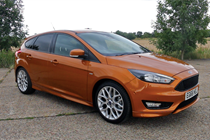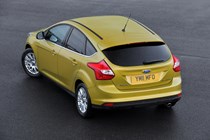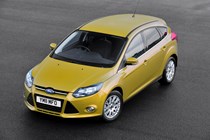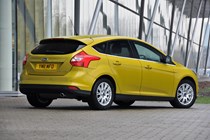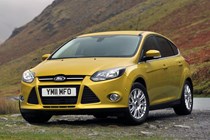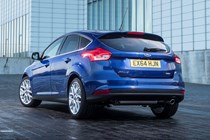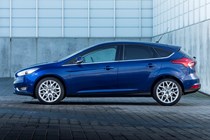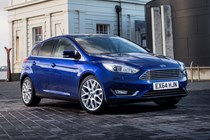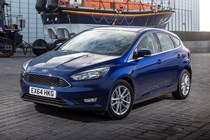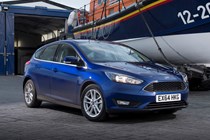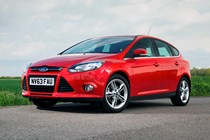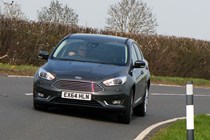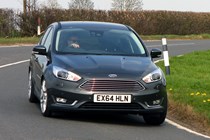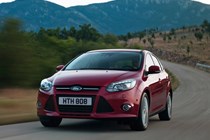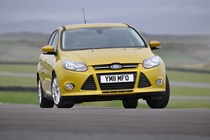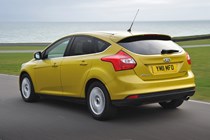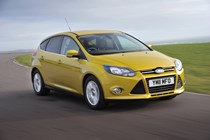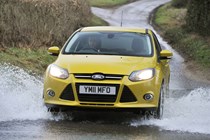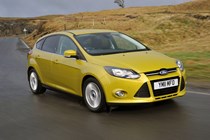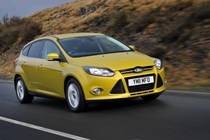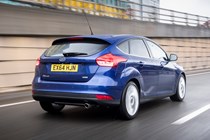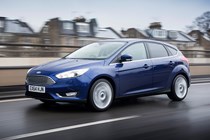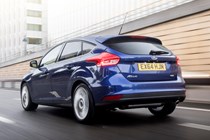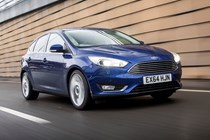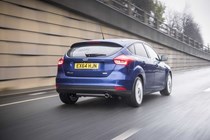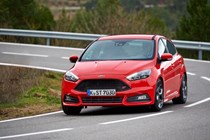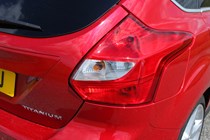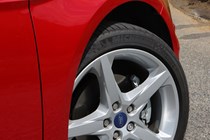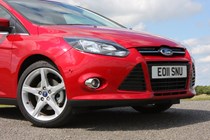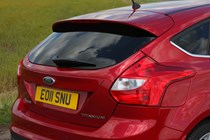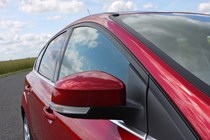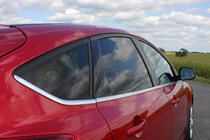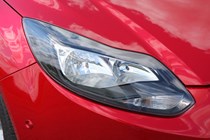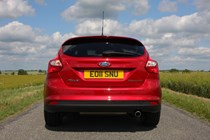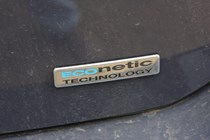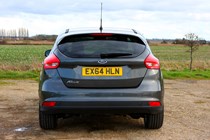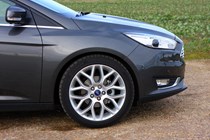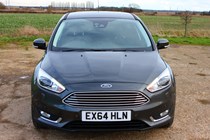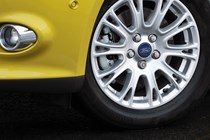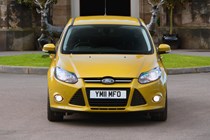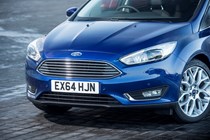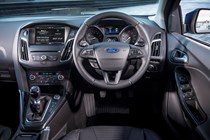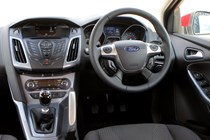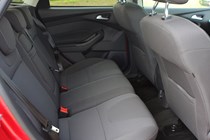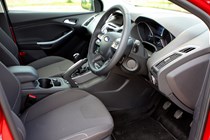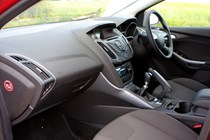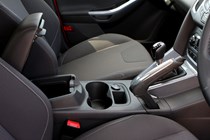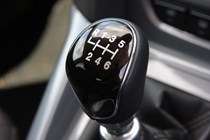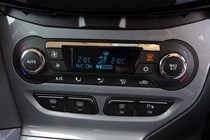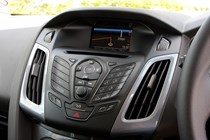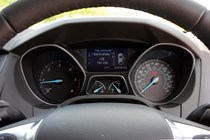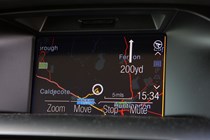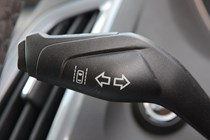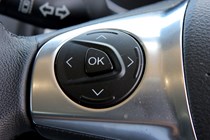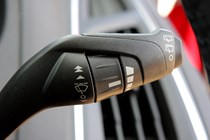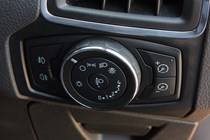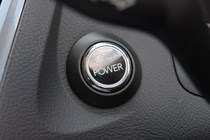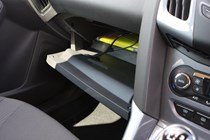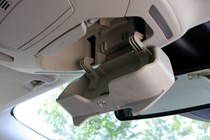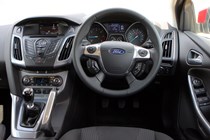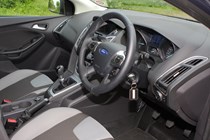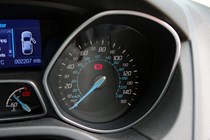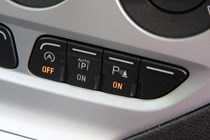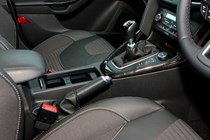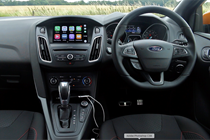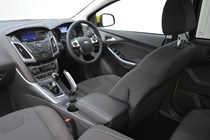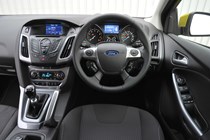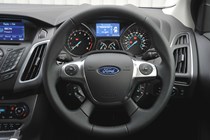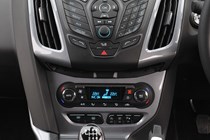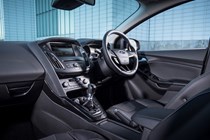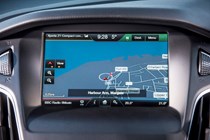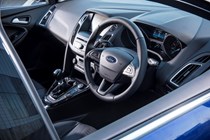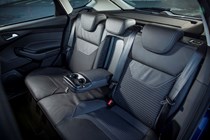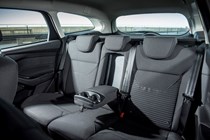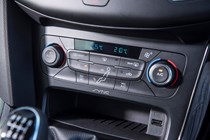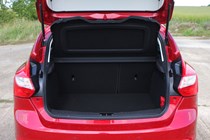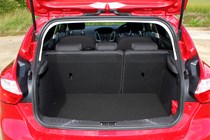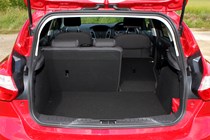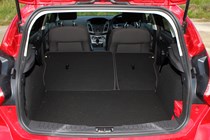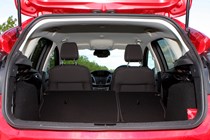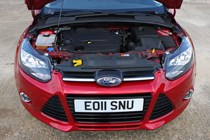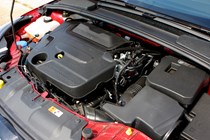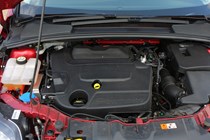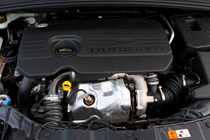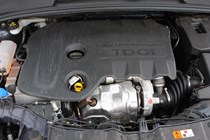Ford Focus Hatchback engines, drive and performance
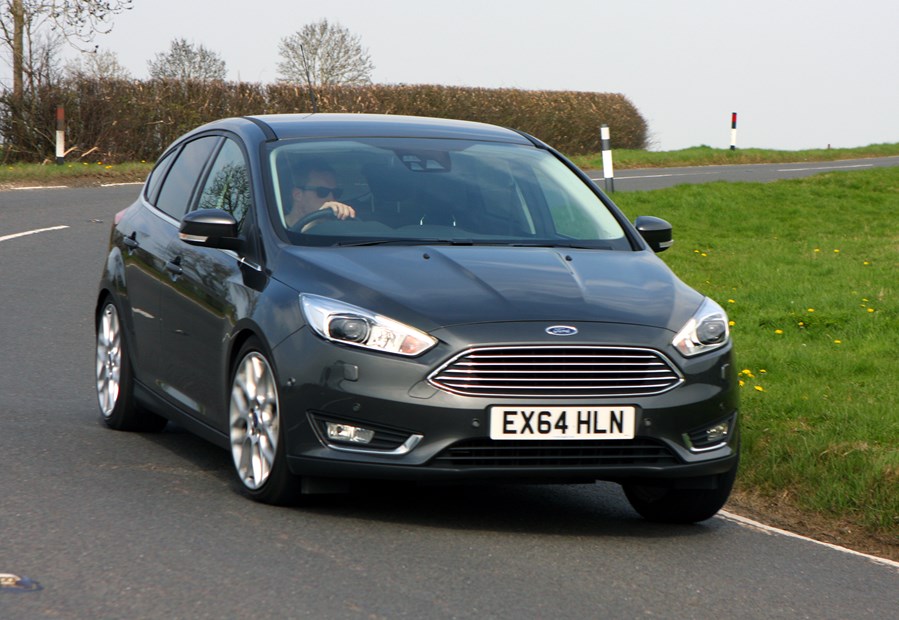
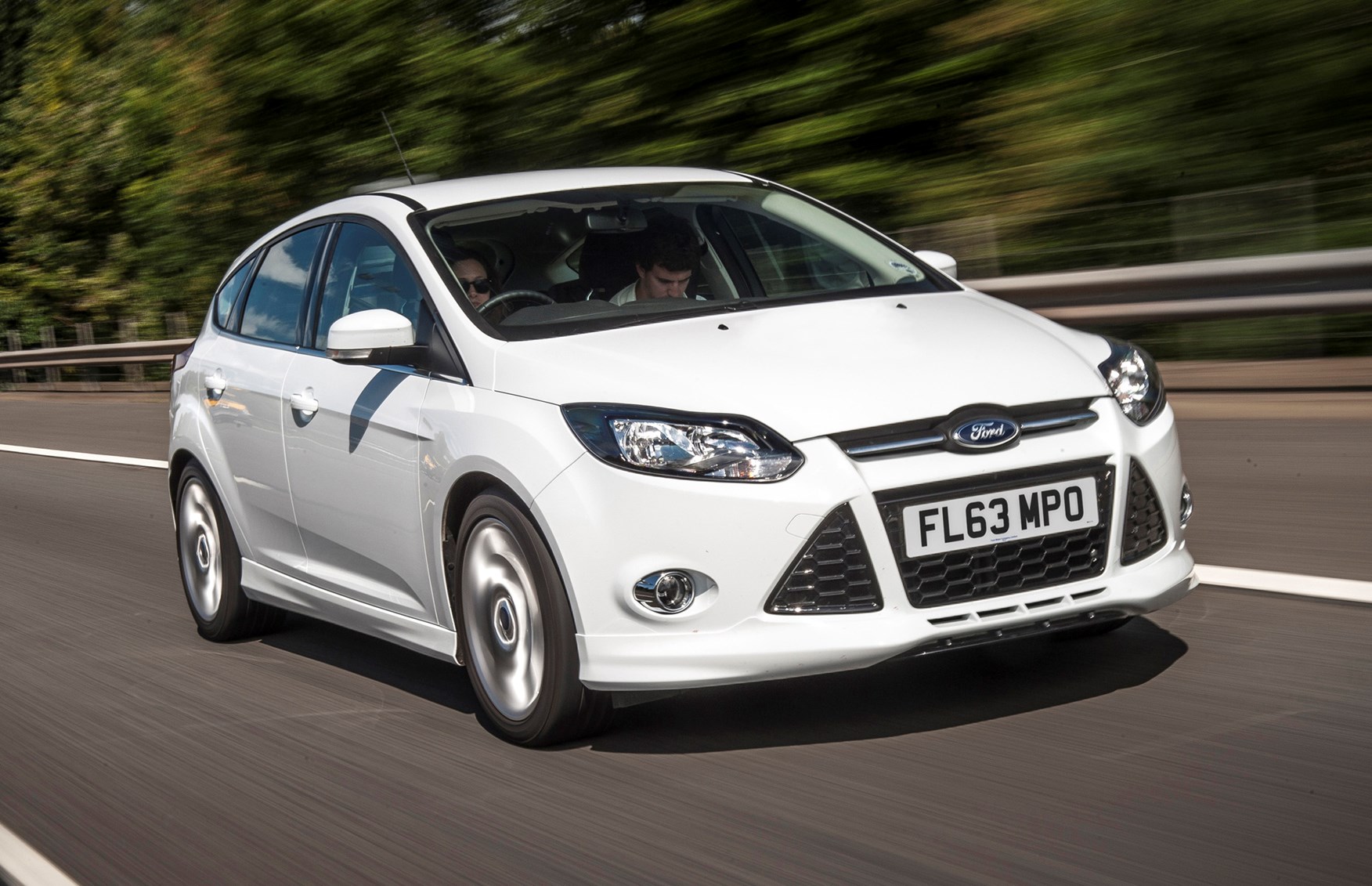
- Petrol, diesel and electric(!) options
- Most are turbocharged for efficiency
- Flagship RS is staggeringly quick
With a broad selection of 13 engine and gearbox combinations delivering the performance, if you can’t find a used Ford Focus Mk3 that suits then you might as well give up now. Petrol, diesel and electric powerplants are available, while higher-performance motors are installed in the Focus ST and RS.
Petrol engines
Ford’s turbocharged EcoBoost engines have grabbed many headlines, and here the technology’s available in 1.0- and 1.5-litre forms. Kicking off proceedings is the three-cylinder 1.0-litre in 100hp form. That’s enough for a top speed of 115mph, while 170Nm of torque means a leisurely 0-62mph time of 12.5 seconds. A five-speed manual’s the only transmission but different gearing means two different sets of efficiency statistics: as standard it delivers a claimed average of 61.4mpg and 105g/km of CO2, but the more frugal alternative posts figures of 65.7mpg and 99g/km.
There’s also a 125hp edition of the 1.0-litre, the standard manual gearbox upgraded to a six-speeder. With an accompanying torque increase to 200Nm, the 0-62mph is shaved to 11 seconds, while the top speed’s 120mph. If you fancy spending extra on a six-speed automatic gearbox then one can be had with this engine, resulting in a 119mph top speed and a 0-62mph time of 12.0 seconds.
Six-speed manuals and optional automatics are available on both versions of the four-cylinder 1.5-litre EcoBoost motors. First up is the 150hp version producing 240Nm of torque. Performance figures for the manual are a 130mph top speed and 8.9 seconds for the 0-62mph sprint; opt for the auto and those numbers become 129mph and 9.2 seconds. Quickest of the 1.5s are the 182hp editions, which still produce 240Nm of torque. Again, the manual transmission is the quicker of the two, with a top speed of 138mph (137mph for the automatic) and a 0-62mph time of 8.6 seconds (8.9 in automatic guise).
Completing the range of non-sporty Focus petrol engines are a pair of 1.6-litre Ti-VCT units, without turbocharging, hence their meagre 85hp and 105hp outputs. Both have five-speed manual gearboxes.
The less powerful motor produces just 141Nm of torque making it the slowest derivative of the Focus range, with a top speed of 106mph and requiring a pedestrian 14.9 seconds to reach 62mph from a standstill. The gutsier version does a little better courtesy of its 150Nm-worth of torque, but even that’s only sufficient for a 116mph top speed and a 12.3-second 0-62mph time.
Diesel engines
The Focus’s diesel-fuelled range starts off with the 1.5-litre TDCi in 95hp form. That doesn’t sound like a tremendous amount of power but its 250Nm of torque outguns all the mainstream petrol engine figures, and like all the diesels, a six-speed manual gearbox is standard. Top speed’s just 112mph but it’ll reach 62mph from a standing start in 12 seconds.
Next up is a 105hp edition of the same engine, here tuned more for economy despite the power and torque increase (it’s up by 20Nm), hence the Econetic badges. Although it has a 116mph top speed, the 0-62mph time only just drops to 11.9 seconds. However, claimed economy is an impressive 83.1mpg, with CO2 emissions of just 88g/km.
Fleshing out the top of the 1.5-litre diesel range is the 120hp version, again with 270Nm, but with a choice of the standard manual transmission or the optional twin-clutch PowerShift automatic – it’s a slow-witted gearbox and one we’d recommend avoiding if you can. Performance is rated at 120mph and 10.5 seconds for the 0-62mph with the manual, 119mph and 10.8 seconds for the automatic.
You’ve a choice of the same two transmissions for the 150hp 2.0-litre TDCi, the engine’s extra capacity helping ramp the torque figure up to 370Nm. It’s a pleasingly sprightly performer, with a top speed of 130mph in manual form, and an 8.8-second 0-62mph time for the manual, 129mph and 8.7 for the PowerShift.
Electric version
It may well have escaped you, not least because Ford sold so few of them, but a Focus Electric was also available. Energy’s stored in a 23KWh lithium-ion battery, enough to give the Electric a theoretical range of up to 100 miles between recharges. Its motor produces 142hp and 250Nm of torque, enough to get from 0-62mph in 11 seconds; top speed is governed to 84mph.
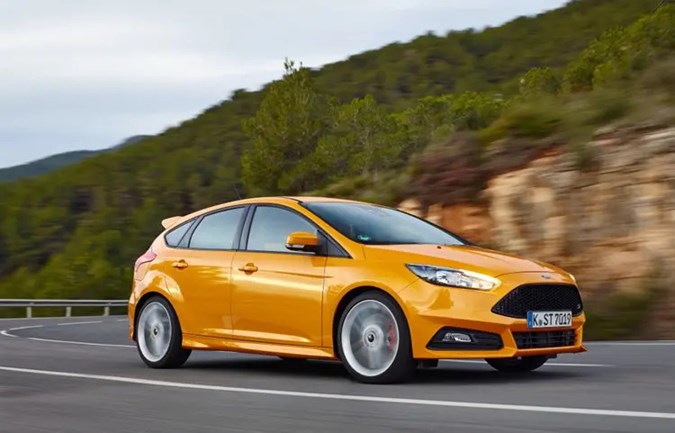
Performance engines: Focus ST Mk3
The engine in this model delivers 250hp, maximum pulling power of 360Nm and it’ll go on to a top speed of 154mph. The stats tell just a smidgeon of the story. Not only is it fast, it feels fast. The performance is linear and smooth, but not so refined that you don’t feel the raw brutality.
For those seeking greater frugality, the ST was also available with an uprated 185hp edition of the 2.0-litre TDCi diesel, with manual or PowerShift transmissions: 400Nm of torque ensures 0-62mph times of 8.1 seconds for the manual and 7.7 for the automatic, while both post identical 135mph top speeds.
PerPerformance engines: Focus RS
It’s fair to say the performance of the Ford Focus Mk3 RS is mindbending. It used a turbocharged 2.3-litre, four-cylinder EcoBoost engine from the firm’s iconic Mustang, but retuned to deliver 350hp and 440Nm of torque available between 2,000rpm and 4,500rpm, though the torque figure swells to 470Nm while in the 18-second ‘overboost’ function upon initial acceleration.
In terms of raw data that equates to a 0-62mph sprint in 4.7 seconds, with a top speed of 165mph. Nothing else at this price point can match those figures. To hit 62mph as fast as the Focus RS will go means using the launch control system, which can be found in the trip computer menus by using the controls on the steering wheel.
It sounds sensational too. On the road the power delivery is savage, and better still with the driving modes tweaked to allow the flap in the specially tuned exhaust to open, eliciting pops and bangs from the twin tailpipes that can’t fail to make you smile.
What’s it like to drive?
- Steering feel duller than Mk2, but still very sharp
- Overall handling still impresses
- ST and RS are especially agile
Overall, the Focus Mk3 is comfortable, but handled sharply enough to be entertaining. On tight corners you get a little more body lean, a little less grip and steering that just isn’t as quick or accurate as that on its predecessor. Still, it’s not bad, and if you do enter bends with gusto you will enjoy decent levels of grip.
It is hard to pick fault. The Focus delivers a comfortable ride, but if you want a sportier feel, ST-Line models have stiffer suspension that helps reduce body roll, making the car feel more agile, without overly compromising that ride quality.
What’s the Focus Mk3 ST like to drive?
The handling in the Ford Focus ST is also let down a little by the electric power-assisted steering, which is best described as rubbery. Still that’s probably the only complaint as far as the Ford Focus ST’s dynamics are concerned.
Although the steering may be low on feel, it’s responsive on turn-in and is well-weighted. Like the standard Focus, you get excellent roadholding, but the sports suspension ramps up the agility a notch. Twisty roads are where the ST excels, coping with fast and tight corners with ease. The body control is excellent, with little lean on tighter corners. The six-speed manual gearbox is smooth, the clutch satisfyingly light and the brakes solid.
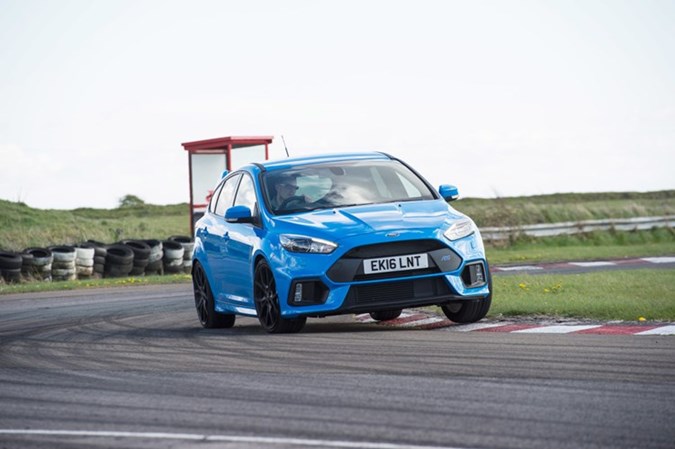
What’s the Focus Mk3 RS like to drive?
Hold on tight. The Focus RS had an innovative all-wheel drive (AWD) system which can send up to 70% of available torque to the rear axle, and 100 percent of that torque exclusively to one side of the car. It uses electronic clutch packs to measure out the torque extremely accurately, with the car computing the desired mix at a rate of 100 times per second.
In its Normal driving mode the RS is astonishingly grippy but relatively safe and benign; it’s possible to flip to a tail-happy drift king at the push of a button. In fact, you’ve got three handling modes to pick from if Normal doesn’t do it for you, but two are strictly for track use only. The most engaging set-up for the road is Sport, which switches the AWD system to a more entertaining configuration and adds to the steering weighting.
